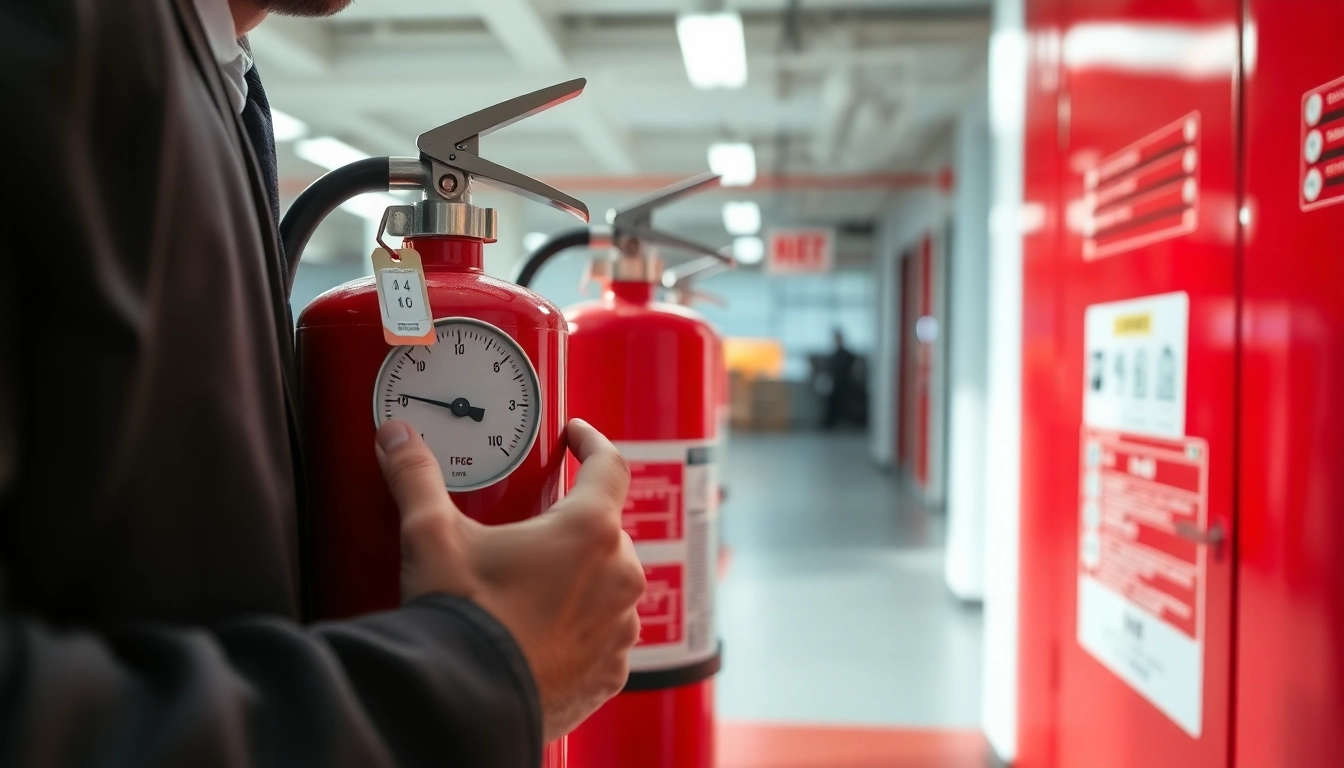
Understanding Fire Extinguisher Inspection Requirements
In any environment where fire risk exists, fire extinguishers play an essential role in ensuring safety and minimizing damage during emergencies. Therefore, conducting regular fire extinguisher inspection is a critical practice that every business and organization must prioritize. Understanding the regulations surrounding these inspections helps ensure compliance and the efficacy of your safety measures. This guide provides comprehensive information about fire extinguisher inspections, from understanding federal regulations to best practices and future trends.
Federal Regulations and Standards
Fire extinguishers are subject to various regulations and standards designed to ensure they are functional and accessible when needed. In the United States, the primary governing body for fire safety is the National Fire Protection Association (NFPA), specifically NFPA 10, which outlines the standards for portable fire extinguishers. According to NFPA 10, fire extinguishers must be inspected at least once a month in all facilities. OSHA (Occupational Safety and Health Administration) mandates these inspections to ensure employee safety and health in the workplace.
In addition to NFPA and OSHA standards, local fire codes may impose additional requirements on businesses. These rules can vary widely across different states and municipalities. Therefore, it is essential to familiarize yourself with local regulations to maintain compliance. The general aim across all these standards is to ensure that fire extinguishers are correctly maintained and readily available in emergencies.
Common Inspection Practices
Regular inspections should share standard practices that ensure the effective functionality of fire extinguishers. Some common inspection practices include:
- Monthly Visual Inspections: A qualified person should conduct visual inspections monthly to check for accessibility, tampering, physical damage, and the pressure level indicated on the gauge.
- Annual Inspections: An extensive examination conducted by a trained professional must be performed annually, which includes checking the physical condition and overall operability of the fire extinguisher.
- Hydrostatic Testing: Fire extinguishers need thorough recharging and hydrostatic testing every 5 to 12 years, depending on the type, to ensure their reliability in emergencies.
Documenting Inspection Results
Proper documentation of inspection results is essential for tracking compliance and effectiveness. Each inspection should generate a detailed report that includes:
- Date of inspection
- What was tested
- Any issues found
- Corrective actions taken
- Inspector’s name and signature
This documentation is not only useful for internal accountability but also serves as proof of compliance during inspections by local authorities or insurance audits.
Best Practices for Conducting Fire Extinguisher Inspections
Monthly Inspection Checklist
To maintain safety standards, a monthly inspection checklist is vital for ensuring that every extinguisher functions optimally. A proactive approach includes the following steps:
- Ensure accessibility: Keep extinguishers unobstructed and easily reachable.
- Examine the physical state: Look for signs of corrosion, damage, or tampering.
- Check pressure gauges: Confirm that the needle is in the green zone, indicating sufficient pressure.
- Inspect the inspection tags: Ensure that tags indicate up-to-date inspection dates.
- Report issues: Immediately notify management of any discovered issues for prompt resolution.
Visual and Mechanical Examination Steps
When performing a visual and mechanical examination, additional steps should be taken to ensure thorough inspection:
- Physical Condition: Look for leaks and listen for hissing sounds that may indicate a loss of pressure.
- Weight Check: A full extinguisher should weigh what’s indicated on its label. A significant loss may mean it’s been discharged.
- Hose and Nozzle Check: Ensure hoses are not cracked, and nozzles are clear of debris.
These actions demonstrate due diligence and rigorous safety measures.
Handling Non-Compliance Issues
Identifying and addressing non-compliance issues promptly is vital for maintaining safety standards. Should an extinguisher fail an inspection or show signs of wear, the following steps should be taken:
- Tag the extinguisher: Use a clear tag indicating that the extinguisher is out of service.
- Notify management: Immediate communication to ensure corrective action is taken quickly.
- Replace or repair: An authorized technician should replace or repair the extinguisher as soon as possible.
Following these procedures ensures a high level of safety in the workplace.
Importance of Fire Extinguisher Inspections for Safety
Reducing Fire Risks in Workplaces
Regular fire extinguisher inspections significantly reduce the risk of fires and enhance safety for employees, clients, and visitors. By ensuring that all extinguishers are in working order, organizations can respond critically during emergencies, potentially saving lives and minimizing property damage.
Legal Obligations for Businesses
Failure to comply with fire extinguisher inspection regulations can result not only in fines and legal repercussions but also in an increase in liability in the event of a fire. Under federal and state laws, businesses must adhere to strict fire safety regulations to uphold a safe working environment. This adherence protects employees and customers and also strengthens a company’s legal standing.
Case Studies on Effective Fire Safety Measures
Several organizations have achieved significant reductions in fire-related incidents through rigorous fire safety measures, including regular inspections. For example, a manufacturing facility that implemented a robust fire extinguisher inspection process saw a 50% decline in workplace fire incidents within a year. Similarly, a retail chain that adhered to NFPA guidelines reported improved insurance premiums and a better safety record.
Hiring Professional Services for Fire Extinguisher Inspection
Choosing the Right Inspection Company
When deciding whether to pursue in-house inspections or to hire a professional service, several factors must be considered:
- Qualifications: Check for relevant certifications, such as those from the National Association of Fire Equipment Distributors (NAFED).
- Experience: Look for companies with a proven track record in fire safety and inspections.
- Reputation: Research reviews and seek recommendations from other businesses in your area.
Assessing Inspection Costs
Budget plays a crucial role when hiring professional fire extinguisher inspection services. While costs can vary based on geographic location, size of the facility, and the number of extinguishers needing inspection, businesses should consider the long-term benefits of investing in reliable services. The costs incurred from penalties due to non-compliance or the consequences of fire-related incidents can far exceed inspection costs.
Interpreting Service Reports
Once an inspection is completed, clearly understanding service reports allows for effective follow-up and rectification of any issues. Inspection reports typically include:
- Date and time of the inspection
- Condition of each extinguisher
- Any recommended actions
- Follow-up dates for repairs or replacements
Reviewing these reports is essential to maintain compliance and ensure that safety measures are continuously updated.
Future Trends in Fire Extinguisher Safety and Maintenance
Technological Advancements in Fire Safety
The future of fire extinguisher maintenance looks poised for innovation. Enhanced technologies such as remote monitoring of fire extinguisher status through IoT (Internet of Things) devices are becoming increasingly available. These systems can automatically alert facility managers when a fire extinguisher requires servicing, ensuring safety protocols are always met.
Innovations in Fire Extinguisher Design
As awareness of fire safety grows, manufacturers are continuously innovating fire extinguishers, integrating features such as lighter materials and ergonomic designs for easier handling. New fire extinguishers also utilize more effective and eco-friendly extinguishing agents, catering to modern safety needs.
Adapting to Changes in Regulatory Standards
Staying ahead of updates to regulations is vital for businesses committed to fire safety. Fire safety authorities regularly revise standards, and businesses must adapt their practices to remain compliant. Continuous education and training for staff on the latest regulations will help facilitate smoother transitions during these changes.







